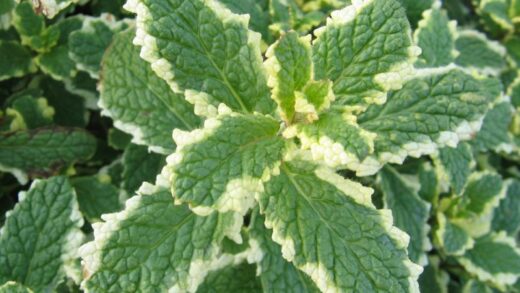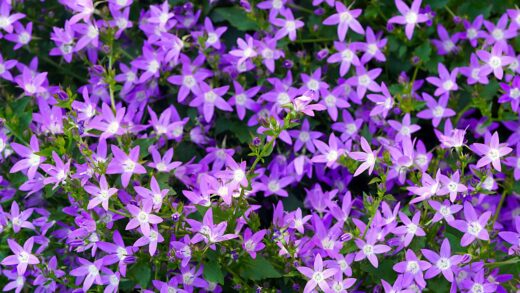The light requirements of rosemary are straightforward and non-negotiable: it is a plant that demands full, direct sunlight to truly thrive. This fundamental need is a direct reflection of its origins on the sun-drenched, open hillsides of the Mediterranean region. In a garden or home setting, providing sufficient light is the most critical factor for ensuring a healthy, vigorous, and aromatic plant. Insufficient light is the primary cause of weak, spindly growth, sparse foliage, and a diminished essential oil content, which is responsible for the herb’s signature fragrance and flavor. Understanding and meeting these high light demands is the foundation of successful rosemary cultivation.
The necessity of direct sunlight
Rosemary’s need for sunlight is not a mere preference but a biological necessity. It requires a minimum of six to eight hours of direct, unfiltered sunlight each day to perform photosynthesis at an optimal level. This process is what fuels all of the plant’s growth, from its root development to the production of its aromatic oils. When deprived of adequate light, the plant’s energy production is compromised, leading to a cascade of health issues. A plant in a shady location will never achieve the dense, bushy habit and robust health of one grown in full sun.
The intensity of the sunlight is as important as the duration. The strong, direct sun typical of a south-facing aspect is ideal. This high-intensity light stimulates the production of the complex chemical compounds that make up rosemary’s essential oils. These oils are not just for human enjoyment; they are part of the plant’s natural defense mechanism, helping to deter pests and conserve water. A plant grown in weaker, indirect light will have a noticeably less potent aroma and flavor because its oil production is significantly reduced.
For gardeners, this means that site selection is paramount. When planting rosemary in the ground, one must choose the sunniest, most open spot in the garden, away from the shadows cast by buildings, trees, or other taller plants. Observation of the proposed planting spot throughout the day is a worthwhile exercise to confirm how many hours of direct sun it actually receives. What may appear to be a sunny spot in the morning could be in deep shade by the afternoon, which would be unsuitable for this sun-loving herb.
The physical appearance of the plant is often the best indicator of whether it is receiving enough light. A healthy, sun-drenched rosemary will have strong, upright stems, dense clusters of deep green, needle-like leaves, and a compact, bushy form. In contrast, a light-deprived plant will exhibit a condition called etiolation. Its stems will be weak, pale, and elongated as they stretch in a desperate attempt to reach a light source. The spacing between the leaves will be greater, giving the plant a sparse and “leggy” appearance.
More articles on this topic
Consequences of insufficient light
When a rosemary plant does not receive the light it requires, the consequences are both aesthetic and physiological. The most visible symptom is the aforementioned leggy growth. The plant prioritizes stem elongation over leaf production in an effort to grow taller and find a better light source. This results in long, bare sections of stem with only a small tuft of leaves at the very end. The plant loses its desirable dense, shrub-like form and becomes weak and unattractive.
Physiologically, the lack of light weakens the entire plant system. The weak, soft growth produced in low-light conditions is far more susceptible to a range of problems. Fungal diseases, such as powdery mildew, are more likely to take hold because the sparse foliage and weak stems reduce air circulation and create a more humid microenvironment. The plant’s overall resilience is diminished, making it an easier target for pests like aphids and spider mites, which are drawn to stressed and weakened plants.
Furthermore, a light-starved rosemary will be less productive in every sense. It will produce fewer flowers, or it may fail to bloom altogether. For those growing rosemary for culinary purposes, the reduction in essential oil production is a significant drawback. The leaves will lack the pungent, resinous aroma and taste that make the herb so valuable in the kitchen. Harvesting from a leggy, light-deprived plant will yield a much less flavorful result compared to harvesting from a specimen grown in full, glorious sun.
In severe cases, a prolonged period of inadequate light can ultimately lead to the plant’s demise. The plant will continually expend more energy trying to find light than it can produce through its limited photosynthesis. It will start to shed its lower leaves to conserve resources, becoming progressively weaker and more barren over time. Eventually, it will lack the energy reserves to sustain itself and will succumb to disease, pests, or simple exhaustion.
More articles on this topic
Providing light indoors
Meeting rosemary’s high light requirements when it is brought indoors for the winter presents a significant challenge. A standard window, even a large one, provides substantially less light than an outdoor location in full sun. The intensity of light drops off dramatically with every foot of distance from the window glass. Therefore, to give an overwintered rosemary the best chance of survival, it must be placed in the sunniest possible location within the home.
The ideal indoor spot is directly in front of a large, unobstructed, south-facing window. This orientation provides the most hours of direct sunlight throughout the day during the winter months in the Northern Hemisphere. An east-facing window can be a secondary choice, as it will provide several hours of direct morning sun, while a west-facing window will offer afternoon sun. A north-facing window is entirely unsuitable, as it receives no direct sunlight at all.
Even in a south-facing window, it is beneficial to rotate the pot every week or so. This ensures that all sides of the plant receive some direct light, which encourages more even growth and prevents the plant from leaning heavily in one direction towards the window. It is also important to keep the window glass clean, as dirt and grime can significantly reduce the amount of light that passes through. The plant should be placed as close to the glass as possible, without its leaves actually touching the cold pane.
Despite these best efforts, it is important to have realistic expectations for a rosemary plant’s condition during the winter. It is normal for the plant to look less vigorous than it does in the summer. It may experience some leaf drop as it acclimates to the lower light levels. The goal of indoor overwintering is primarily survival, not active growth. Providing the maximum possible light helps the plant to maintain its energy reserves so that it can rebound quickly when it returns outdoors in the spring.
The role of supplemental lighting
In situations where a sufficiently sunny window is not available, or for gardeners who wish to keep their indoor rosemary in better condition throughout the winter, supplemental lighting can be an excellent solution. Using grow lights can effectively bridge the gap between the low light levels available indoors and the high light levels that rosemary requires. Modern LED (Light Emitting Diode) grow lights are an energy-efficient and highly effective option for this purpose.
For supplemental lighting to be effective, the light needs to be of the correct spectrum and intensity, and it needs to be provided for a sufficient duration. A full-spectrum grow light that mimics natural sunlight is the best choice for rosemary. The light fixture should be positioned directly above the plant, typically six to twelve inches from the topmost leaves. This close proximity is crucial for providing the necessary intensity. A light that is too far away will have a negligible effect.
The grow light should be operated for a duration that, combined with any natural light the plant receives, totals at least ten to twelve hours per day. Using an automatic timer is the most convenient and reliable way to ensure the plant receives a consistent daily period of light. This mimics the long days of the growing season and provides the plant with the energy it needs to maintain its health and even produce some modest new growth during the winter.
While a simple fluorescent shop light can provide some benefit, a dedicated LED grow light is a far superior investment for a sun-loving plant like rosemary. The correct supplemental lighting can make a dramatic difference in the health of an overwintered plant. It can prevent the typical leggy growth and leaf drop associated with indoor conditions, resulting in a healthier, more robust plant that is ready to thrive as soon as it is moved back outdoors in the spring.


















